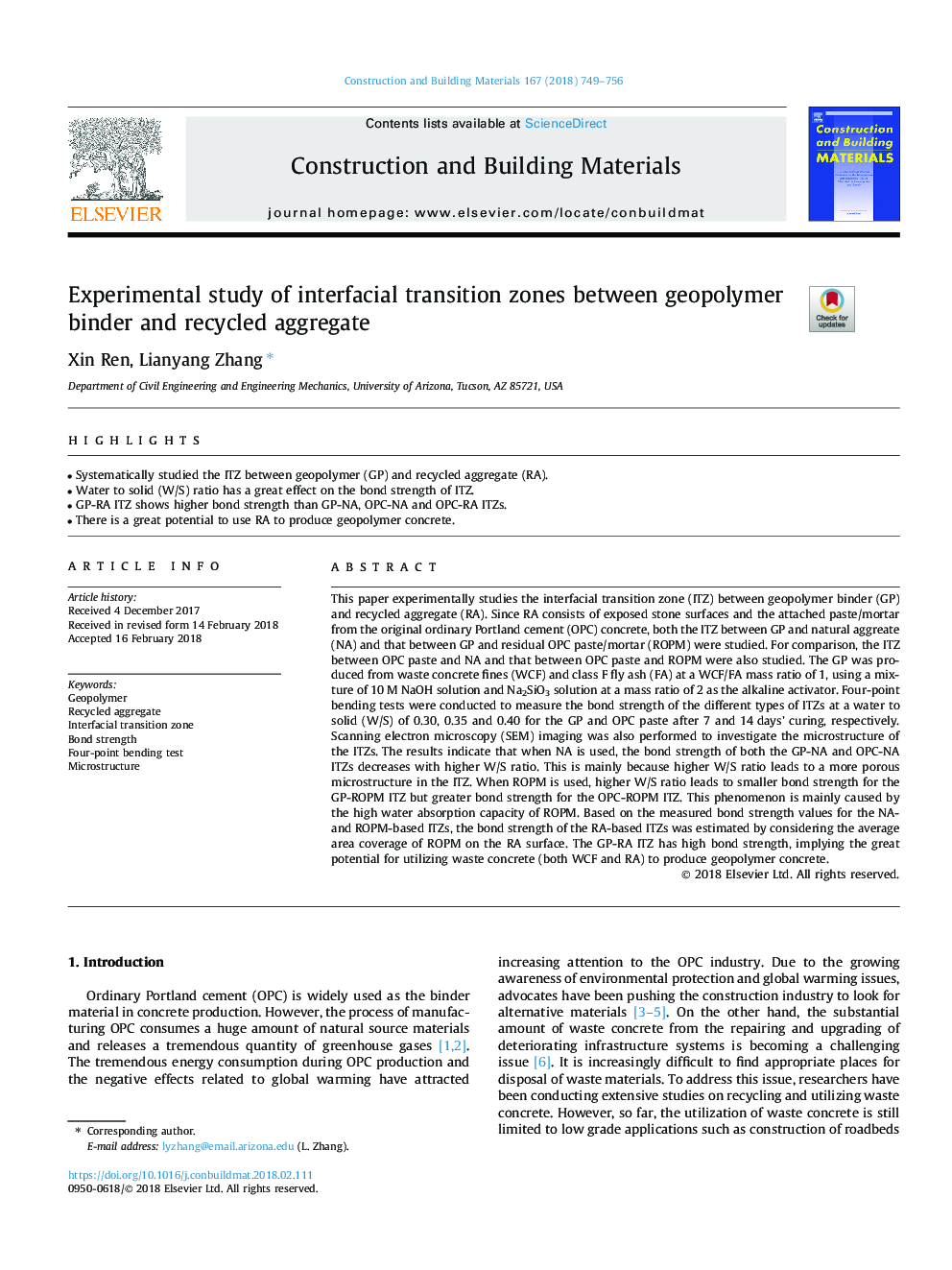| کد مقاله | کد نشریه | سال انتشار | مقاله انگلیسی | نسخه تمام متن |
|---|---|---|---|---|
| 6715369 | 1428739 | 2018 | 8 صفحه PDF | دانلود رایگان |
عنوان انگلیسی مقاله ISI
Experimental study of interfacial transition zones between geopolymer binder and recycled aggregate
ترجمه فارسی عنوان
مطالعه تجربی بین مناطق عبور بین فسفات در بین گیرنده های ژئوپلیمر و جمع آوری بازیافتی
دانلود مقاله + سفارش ترجمه
دانلود مقاله ISI انگلیسی
رایگان برای ایرانیان
کلمات کلیدی
موضوعات مرتبط
مهندسی و علوم پایه
سایر رشته های مهندسی
مهندسی عمران و سازه
چکیده انگلیسی
This paper experimentally studies the interfacial transition zone (ITZ) between geopolymer binder (GP) and recycled aggregate (RA). Since RA consists of exposed stone surfaces and the attached paste/mortar from the original ordinary Portland cement (OPC) concrete, both the ITZ between GP and natural aggreate (NA) and that between GP and residual OPC paste/mortar (ROPM) were studied. For comparison, the ITZ between OPC paste and NA and that between OPC paste and ROPM were also studied. The GP was produced from waste concrete fines (WCF) and class F fly ash (FA) at a WCF/FA mass ratio of 1, using a mixture of 10â¯M NaOH solution and Na2SiO3 solution at a mass ratio of 2 as the alkaline activator. Four-point bending tests were conducted to measure the bond strength of the different types of ITZs at a water to solid (W/S) of 0.30, 0.35 and 0.40 for the GP and OPC paste after 7 and 14â¯days' curing, respectively. Scanning electron microscopy (SEM) imaging was also performed to investigate the microstructure of the ITZs. The results indicate that when NA is used, the bond strength of both the GP-NA and OPC-NA ITZs decreases with higher W/S ratio. This is mainly because higher W/S ratio leads to a more porous microstructure in the ITZ. When ROPM is used, higher W/S ratio leads to smaller bond strength for the GP-ROPM ITZ but greater bond strength for the OPC-ROPM ITZ. This phenomenon is mainly caused by the high water absorption capacity of ROPM. Based on the measured bond strength values for the NA- and ROPM-based ITZs, the bond strength of the RA-based ITZs was estimated by considering the average area coverage of ROPM on the RA surface. The GP-RA ITZ has high bond strength, implying the great potential for utilizing waste concrete (both WCF and RA) to produce geopolymer concrete.
ناشر
Database: Elsevier - ScienceDirect (ساینس دایرکت)
Journal: Construction and Building Materials - Volume 167, 10 April 2018, Pages 749-756
Journal: Construction and Building Materials - Volume 167, 10 April 2018, Pages 749-756
نویسندگان
Xin Ren, Lianyang Zhang,
